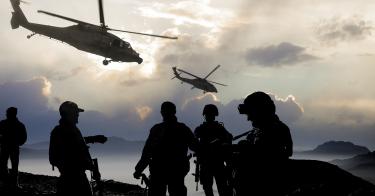President Trump has reversed yet another policy decision of the Obama administration. On Wednesday, he announced that the U.S. military will no longer “accept or allow” transgender people in its ranks.
Last year, then-Secretary of Defense Ashton Carter announced that transgender individuals serving in the military would no longer be forced to leave. Moreover, Carter said, openly transgender individuals would be allowed to join the military, starting this July 1.
Carter’s announcement got widespread news coverage. But neither Carter nor President Obama ever articulated how the new policy would affect military readiness. And that is the most important factor by which we should evaluate changes to existing military personnel policy.
So what is the state of U.S. military readiness today? Most experts agree with the Heritage Foundation’s assessment that our military is under extreme stress, “beset by aging equipment, shrinking numbers, and rising costs.” In response to growing threats from virtually all corners of the world, the Pentagon has deployed forces in more than 180 countries.
The pace of deployments has increased as well. In many cases, troops completing a nine-month deployment get only nine months back at home to recover and train before being deployed yet again. This puts tremendous strains on marriages, relationships, and overall mental health.
From 2001-2003, when I commanded a brigade with responsibilities for basic training at Fort Leonard Wood, Mo., I saw a constant flow of individuals who failed to meet the medical requirements for military service. At the time the most common reason for failure was asthma. Sometimes it was a preexisting condition that had been missed during the initial physical. Sometimes the asthma developed only after the person engaged — for the first time in his or her life — in hard physical exertion.
All of these young Americans desperately wanted to serve their country. But the requirements were crystal clear: If soldiers were going to need continuing medical attention to treat their condition or if there was a question about whether they would be able to serve in the harshest of battlefield conditions, they were not allowed to join. Even an individual with sleep apnea, who needed only a device that required access to electrical power, was ineligible.
What about people who wanted to enlist but had a prior injury or condition, like a torn tendon in a shoulder, that required surgery? They weren’t eligible to serve until the condition had been resolved.
Often those being rejected or dismissed would ask, “Isn’t there a desk job where I can serve in the rear echelon?” While I respected their desire to serve, that’s not the way the U.S. military operates, nor can it. Every individual in uniform must be able to deploy, fight, and win in austere conditions, without any reliance on a daily flow of medications, medical treatment, or special provisions.
It’s an unforgiving standard, but a necessary one if U.S. forces are going to prevail on distant battlefields.
Which brings us to the president’s decision regarding transgender individuals and the military. Certainly, their desire to serve is laudable. But desire to serve does not, of itself, answer the fundamental question of whether a transgender individual’s service helps or harms military readiness.
These individuals would need medical treatments — hormone therapies and often surgeries and the accompanying recovery times — throughout the duration of their service. On this basis alone, under existing rules applicable to all, they would not be allowed to join.
But putting that aspect aside, there is another readiness-related question that must be asked: Are transgender individuals as mentally resilient and as able to withstand the extreme stresses of the harsh crucible of combat as non-transgender individuals?
Some studies report that transgender individuals attempt suicide and experience psychological distress at rates many times the U.S. national average. To be clear, this is self-reported data, not data gleaned from rigorously controlled, clinical tests. But at this time, these survey results are the best available data. It would be both irresponsible and immoral to place such individuals in a position where they are exposed to the additional extraordinary stresses and pressures of the battlefield.
So, it seems caution is prudent. Prior to the president’s recent announcement, Defense Secretary James Mattis had delayed implementation of the Obama administration’s policy for six months.
The vice chairman of the Joint Chiefs of Staff, Air Force Gen. Paul Selva, provided more insight on that decision, saying “Our decision to delay the accessions … was largely based on a disagreement on the science of how mental-health care and hormone therapy for transgender individuals would help solve the medical issues that are associated with gender dysphoria.”
These concerns should be fully resolved before our country goes forward with any change in long-standing policy. The stakes are too high to experiment with our national defense or to inadvertently cause harm to those wishing to serve.
This piece originally appeared in The Philadelphia Inquirer




